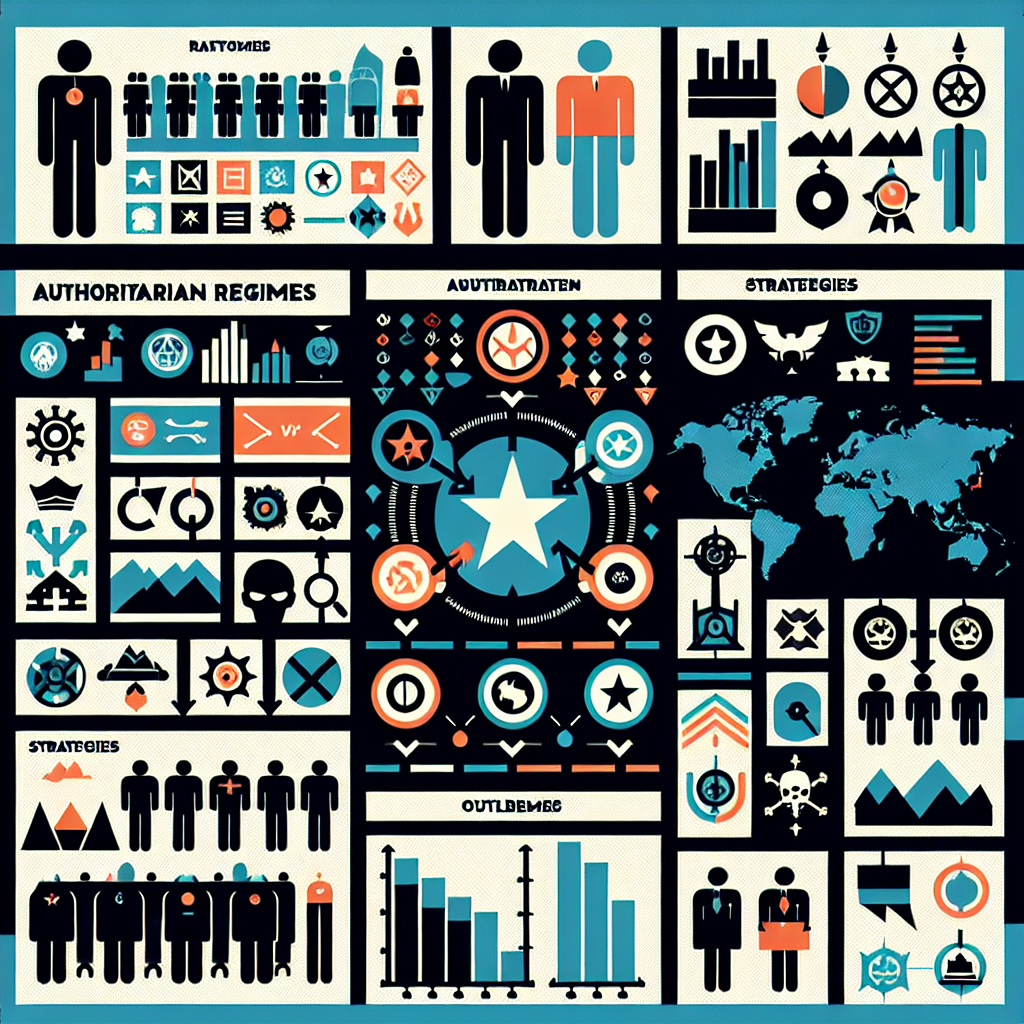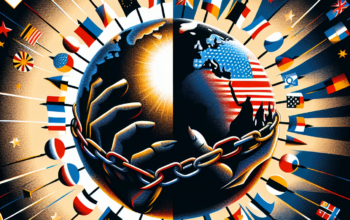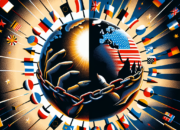Introduction
In the realm of global governance, authoritarian regimes have exhibited remarkably diverse strategies and outcomes that dictate the political, social, and economic dynamics of countries worldwide. A comparative study of authoritarian regimes illuminates the complex mechanisms through which power is maintained and the varying consequences such governance triggers. Understanding the strategies employed by these regimes—whether repressive or adaptive—offers invaluable insights into their longevity and impact on citizens. This article delves into the nuances of authoritarianism, examining specific cases to decode their strategies and resultant outcomes in the year 2025 and beyond.
Understanding Authoritarian Governance: Mechanics and Ideologies
The mechanics of authoritarian governance typically hinge on a concentrated power structure that prioritizes state control over individual freedoms. In authoritarian regimes, political pluralism is generally suppressed, permitting minimal to no opposition. This leads to a pervasive culture of repression where dissent is systematically eliminated. Ideologically, many of these regimes advocate nationalism or socialism, promoting a particular vision of society that legitimizes their control. For instance, countries like North Korea embrace a cult of personality around their leadership, anchoring power through a web of propaganda and severe penalties for dissent.
In 2025, we observe a shift in authoritarian strategies as technology amplifies both state control and citizen resistance. Authoritarian leaders increasingly deploy digital surveillance and social media manipulation as tools for maintaining power. In nations such as China, the social credit system exemplifies how technology can be harnessed to encourage compliance and stifle dissent. By surveilling their citizens and rewarding or punishing behaviors, these regimes cement their authority while simultaneously navigating the intricacies of a modern, connected society.
Comparative Strategies: Repression versus Co-optation
Different authoritarian regimes utilize distinct strategies to consolidate their power, primarily categorized as repression or co-optation. Repressive tactics encompass censorship, violence, and the systematic targeting of opposition figures and activists. The case of Belarus under Alexander Lukashenko highlights the brutal repercussions of dissent, with the regime utilizing police crackdowns and media suppression to quell protests that challenge its authority. In 2025, the regime continues to leverage these tactics to maintain a façade of stability amidst growing discontent.
Conversely, some regimes opt for co-optation to maintain control. Co-optation involves the integration of opposition voices or the allowance of limited political pluralism to defuse dissent. The strategic use of patronage is paramount in this context, epitomized by Venezuela, where the government has maintained a semblance of support through distribution of resources to loyal constituents. Such strategies create dependencies that, while seemingly benign, insidiously strengthen the regime’s grip on power, as opposition is muted through financial ties and social support schemes.
Impact on Socio-Economic Outcomes in Authoritarian Contexts
The socio-economic outcomes of authoritarian governance are profoundly influenced by the strategies adopted by these regimes. In cases of severe repression, economic stagnation often follows, as exemplified by the economic malaise in North Korea, where punitive policies and isolation have left much of the population impoverished. The regime’s focus on militarization has diverted resources away from essential services, exacerbating the plight of average citizens. As global markets progress in 2025, North Korea remains functionally disconnected, resulting in severe humanitarian crises and desperation among the populace.
In contrast, authoritarian regimes that engage in co-optation can sometimes achieve significant economic growth, albeit with critical caveats. The case of China is instructive; the government’s embrace of market reforms has driven extraordinary economic expansion, lifting millions from poverty. However, these gains come at the cost of freedoms, with human rights abuses and environmental degradation accompanying rapid industrialization. Even as China’s economy flourishes, social unrest brews beneath the surface, raising questions about the sustainability of its model in the decades to come.
The socio-economic fallout from authoritarian strategies prompts critical questions about the balance of power and citizen welfare. In exploring the outcomes of regimes in 2025, it becomes clear that the choices made by leaders have profound implications not just for their governance but for global stability and trade, particularly as interconnected economies face the repercussions of authoritarian policies in international markets.
Case Studies in Authoritarian Regimes: Successes and Failures
Examining specific case studies reveals the mixed success of authoritarian governance in 2025. A prominent example is Russia, where President Vladimir Putin’s regime has adopted aggressive foreign policies coupled with stringent domestic control. The invasion of Ukraine in 2022, followed by ongoing support for separatist movements in Eastern Europe, exemplifies how a focus on nationalism and military prowess can yield temporary successes on the global stage. Nevertheless, such tactics have isolated Russia economically and politically, prompting ongoing sanctions and diplomatic estrangement from the West.
In contrast, the Iranian regime showcases the pitfalls of ideological rigidity and failed internal policy. As protests surged in late 2023 over economic mismanagement and human rights abuses, the government’s heavy-handed response led to international condemnation and further destabilization. By 2025, Iran is grappling with not only internal discord but also external challenges, as sanctions hamper its economy, forcing a critical reassessment of the strategies leaders have implemented.
Another critical case is Turkey, where President Recep Tayyip Erdoğan has combined authoritarian governance with explicitly Islamist policies. The ruling party has maintained power through a blend of repression and co-optation, securing support from key demographics by promising economic development and national pride. However, in 2025, Turkey faces economic turmoil and increasing dissent among its citizens dissatisfied with rising costs and decreasing freedoms. The balance Erdoğan attempts to strike between autocratic control and the demands of a diverse populace serves as a cautionary tale of the fragility of authoritarian regimes.
The Future of Authoritarian Regimes: Trends and Predictions
As we look toward the future, the landscape of authoritarian regimes appears poised for significant transformation. The advent of artificial intelligence and advanced surveillance tools may allow authorities to maintain control more efficiently, enabling them to preempt dissent with precision. In 2025, we witness a proliferation of technologies that enable the monitoring of citizen behavior and communication, implying that authoritarian regimes are better equipped than ever to suppress opposition while maintaining the veneer of legitimacy.
However, these same tools can and have been leveraged by civil society and opposition movements. With the rise of decentralized networks and new digital platforms, a counter-movement emerges, harnessing technology to organize resistance against oppressive regimes. Movements across the globe, particularly in authoritarian contexts like Belarus and Iran, illustrate the potential for grassroots activism fueled by digital technology, implying a future where authoritarian control may well be challenged more broadly and effectively.
In light of these trends, it becomes critical to examine how the attention of global actors and the strategies of authoritarian regimes evolve in tandem. The international community’s response to oppressive governance will likely dictate its efficacy; increased engagement through diplomatic pressure and economic sanctions may catalyze reform in recalcitrant regimes, while tacit acceptance can entrench authoritarian rule further. By 2025, the degree to which global players confront or collude with these regimes will shape the geopolitical landscape for years to come.
Conclusion
A comparative study of authoritarian regimes reveals the intricate webs of strategies that dictate their survival and influence around the globe, especially in 2025. Through repressive measures or co-optation tactics, these regimes manage to navigate challenges while often sacrificing citizen welfare. The socio-economic consequences of such governance illuminate stark contrasts—between stagnation and growth, domestic unrest and stability. Case studies from countries like Russia, Iran, and Turkey provide insightful glimpses into the successes and failures of various approaches to control.
As we look forward, the evolution of authoritarian regimes will undoubtedly hinge on the interplay between technological advancement and citizen activism. Understanding this dynamic is crucial for predicting the future of global governance and the sustainability of authoritarian rule as citizens strive for greater accountability and freedom. Ultimately, the strategies and outcomes of these regimes present pivotal questions about power, belonging, and the role of the individual in shaping a political landscape that resonates with the needs of its people.
FAQs
What defines an authoritarian regime?
An authoritarian regime is characterized by centralization of power, limited political pluralism, suppression of dissent, and minimal public participation in government. These regimes often restrict freedoms and employ state mechanisms to maintain control.
How do authoritarian regimes maintain power?
Authoritarian regimes maintain power through various strategies, including repression, co-optation, propaganda, and control of media. They may also leverage economic patronage or nationalism to cultivate public support and legitimization.
Can authoritarian regimes be successful in terms of economic growth?
Yes, some authoritarian regimes can achieve significant economic growth through state-led initiatives and market reforms. However, this growth often comes at a cost to individual freedoms and human rights, creating a complex balance of governance that can lead to instability.
What are some examples of modern authoritarian regimes?
Modern examples of authoritarian regimes include North Korea, Russia, Venezuela, Iran, and China. Each of these countries employs various strategies to sustain control while navigating internal and external pressures.
How is technology impacting authoritarian governance?
Technology plays a dual role in authoritarian governance; it provides regimes with tools for surveillance and control while simultaneously empowering citizens to organize and resist. The rise of digital platforms can facilitate activism and increase awareness of oppressive practices.












